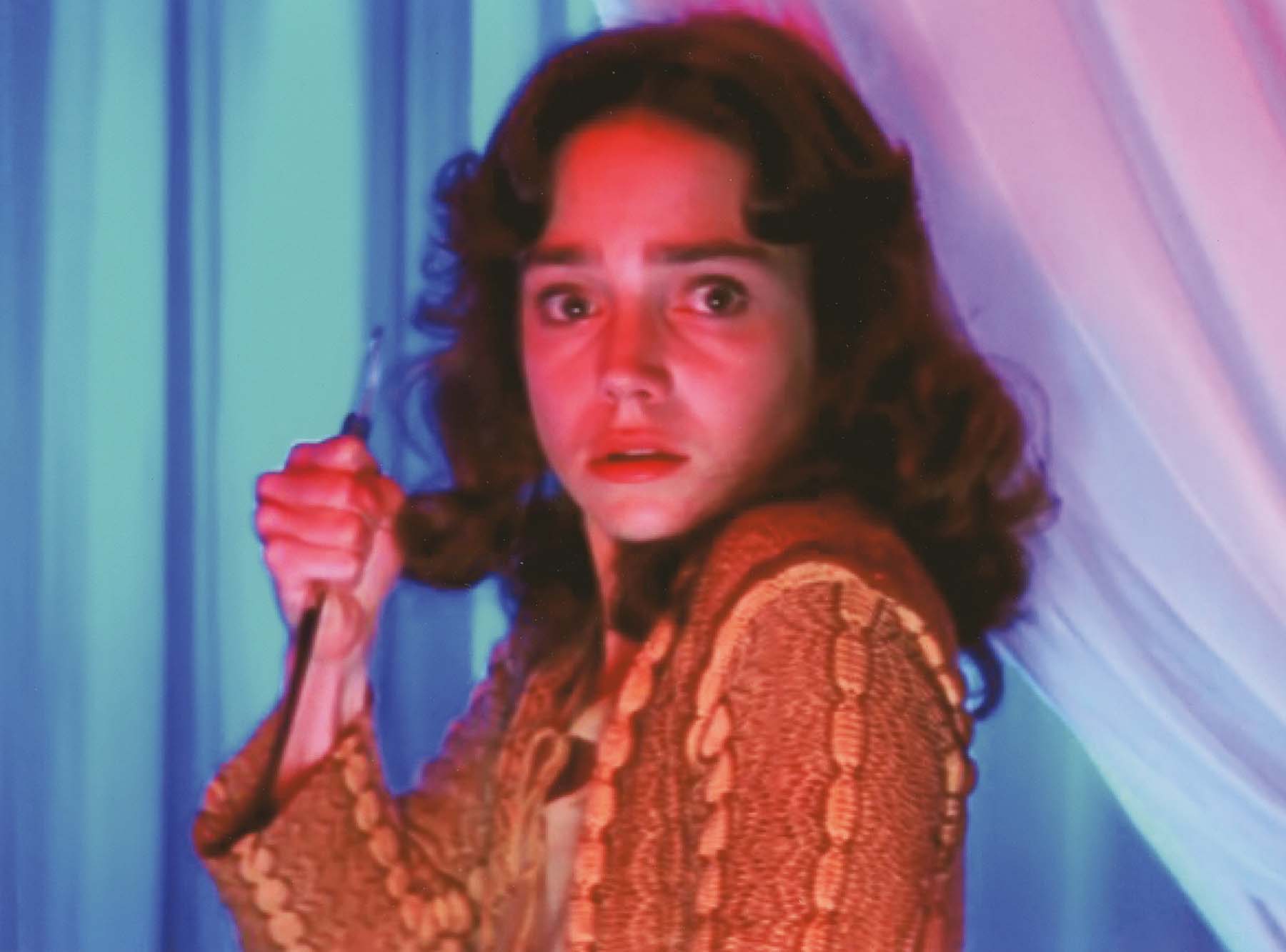Two hundred years pass. A pair of doctors, Choma Kruvajan (Andrea Checchi) and Andrej Gorobec (John Richardson), are traveling through the region when their carriage breaks a wheel. While it is being repaired, they discover the ancient crypt containing the tomb of Asa, the death mask still visible through the pane of glass. A bat swoops down at Kruvajan, causing him to break the glass as well as the stone cross. Removing the death mask, he cuts his hand on the glass, and blood drips onto the brittle shell of the witch’s ruined face.
Outside, the physicians encounter Katia Vajda (again, Barbara Steele), one of Asa’s cursed lineage. Gorobec finds her grave beauty immediately attractive. As the men escort Katia from the crypt to a nearby inn, Asa is brought partially back to life in her tomb by the power of Kruvajan’s blood. She reaches out telepathically to Javutich in his unmarked grave and reanimates him. The walking corpse then makes its way to the castle of Prince Vajda, Katia’s father, who repels Javutich with a crucifix. The creature switches its attention to Kruvajan, leading him back to Asa’s tomb, which explodes, fully exposing the vampire sorceress, who takes more of his blood, making him her slave. Her main goal is to steal the life energy of her look-alike, Katia, and thereby achieve true immortality.
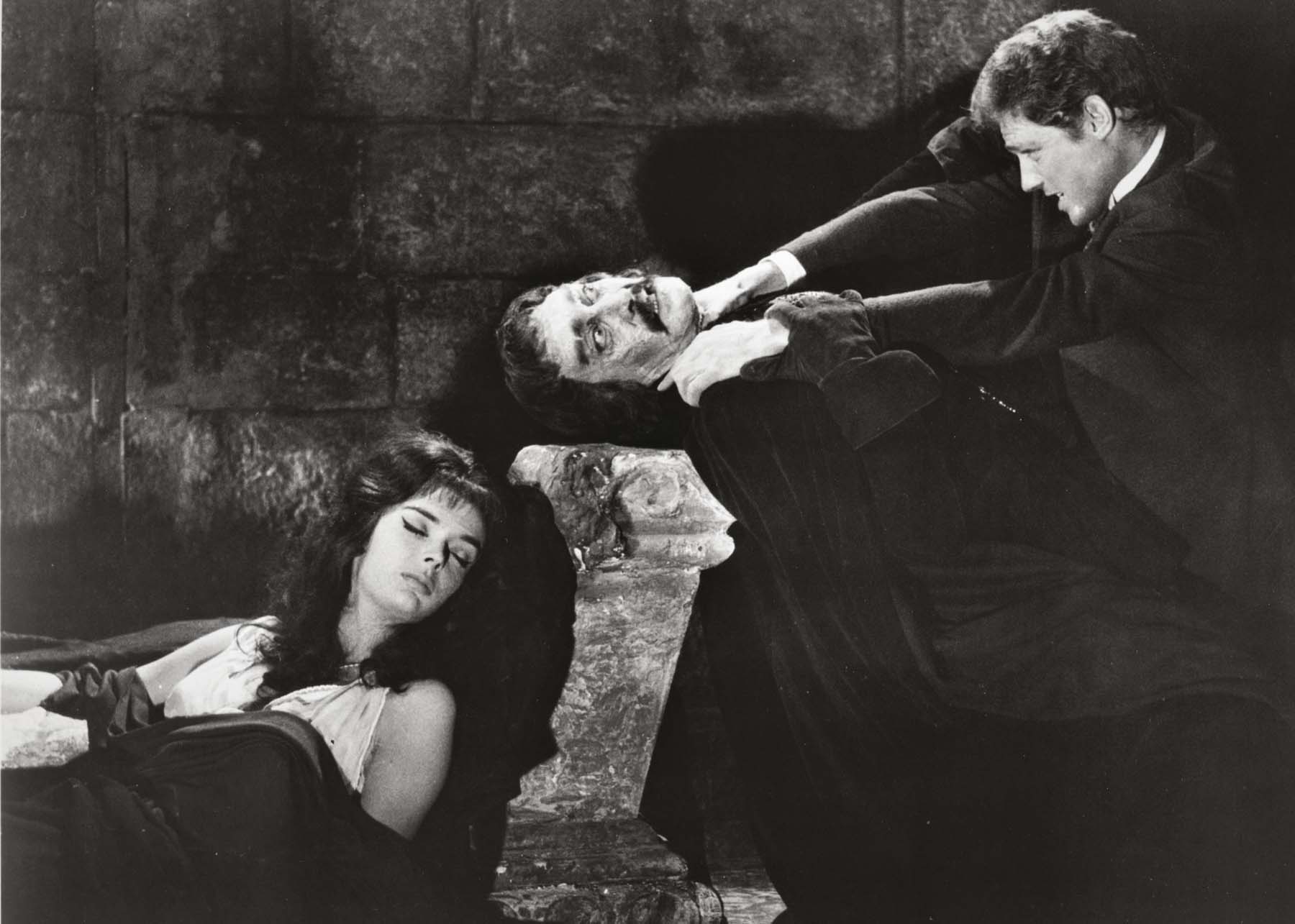
Barbara Steele, Arturo Dominici, and John Richardson
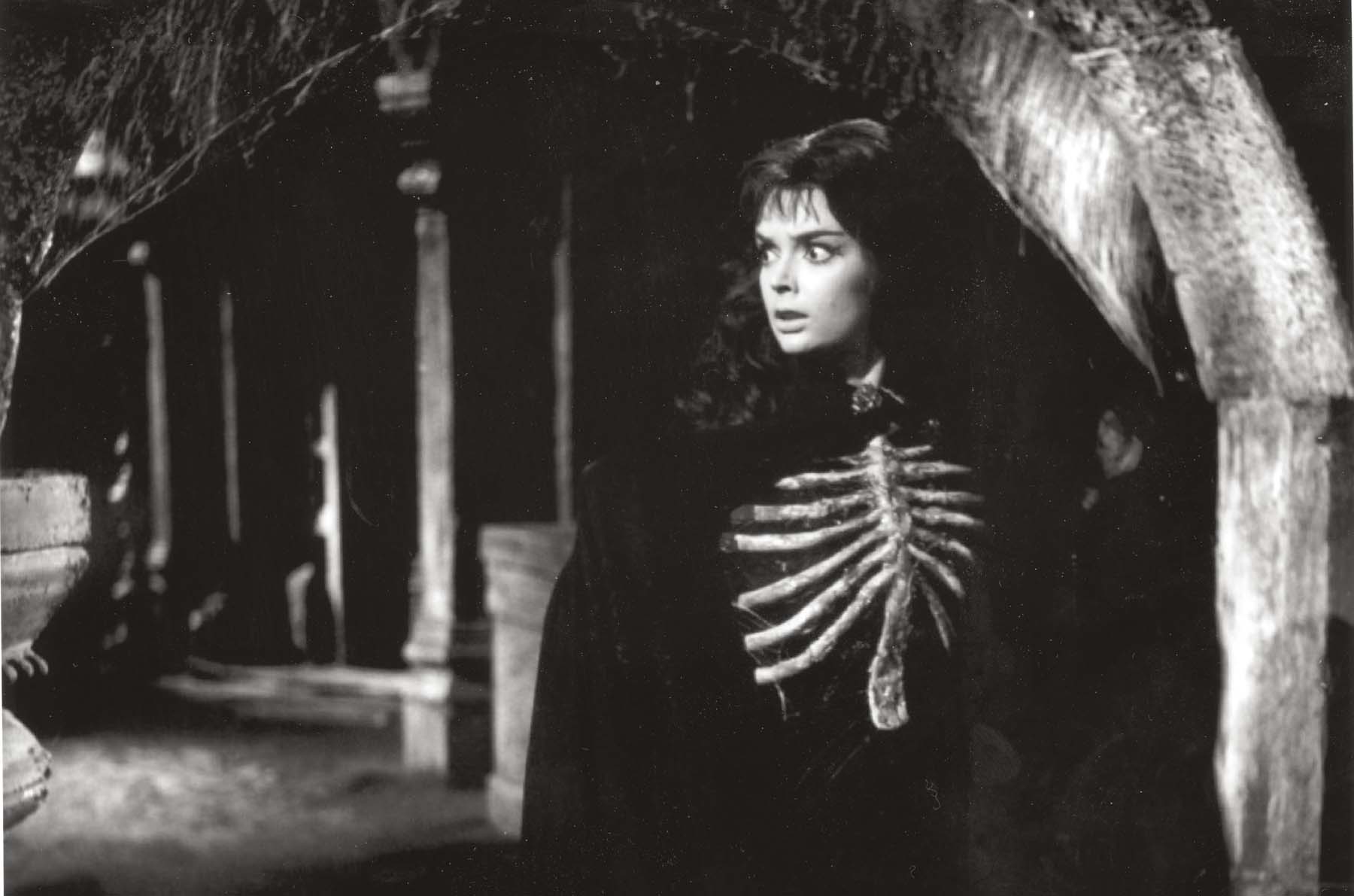
Beneath her cloak, Asa’s rejuvenation is far from complete.
Many viewers are confused about whether Black Sunday is a film about vampires or a film about witchcraft. In fact, it is both, since the oral folklore tradition of eastern Europe did not always make sharp distinctions between malevolent supernatural beings. Literature and cinema are largely responsible for the segregation of such creatures into discrete categories.
British censors refused to give the film an exhibitor’s certificate, and it remained banned until 1968. In the United States, American International Pictures trimmed a few scenes of the most explicit kind (blood spurting from the hammered mask, fluid squirting from a pierced vampire eyeball, etc.) and completely replaced the soundtrack with American dubbing and a new score by Les Baxter (superseding Roberto Nicolosi’s original composition). The studio also finally changed the title from Mask of the Demon to Black Sunday. The new title added a note of religious transgression, and the film’s mystique of being forbidden (and therefore exciting) was a publicity bonus all its own. Curious enough, the Catholic Legion of Decency did not give Black Sunday its notorious “Condemned” rating, or any rating at all. Since the film was part of an AIP low-budget double bill that also included Roger Corman’s Little Shop of Horrors, and wasn’t given mainstream promotion, it is entirely possible that the legion simply ignored it, considering it beneath contempt—or not worth the trouble of condemning.
Black Sunday established Barbara Steele as an instantly recognizable icon of horror cinema; her extensive screen work includes The Pit and the Pendulum (1961), The Horrible Dr. Hichcock (1962), Shivers (1975), Piranha (1978), and the 1991 television revival of Dark Shadows.
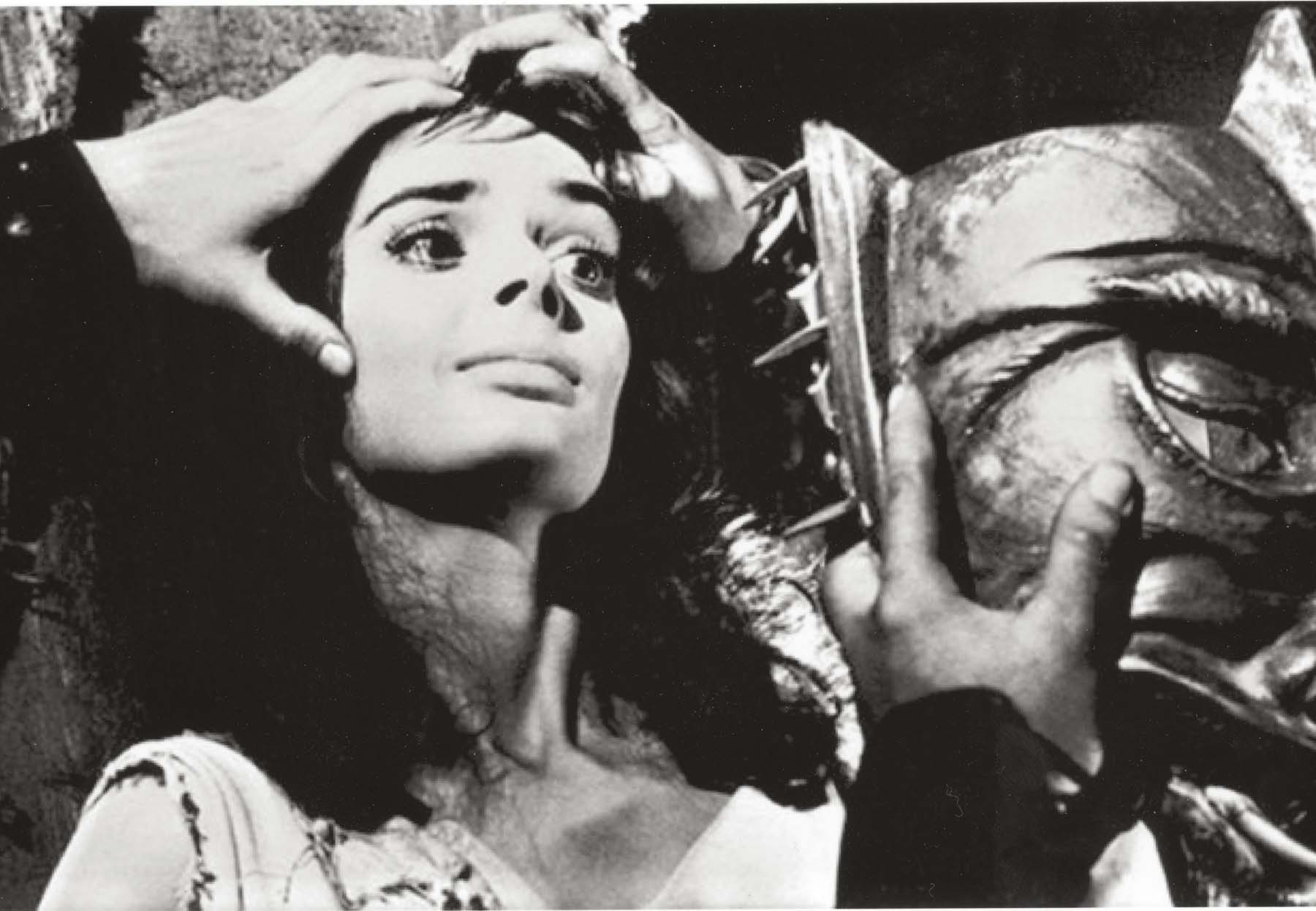
Princess Asa (Barbara Steele) meets her death wearing the spiked Mask of Satan.
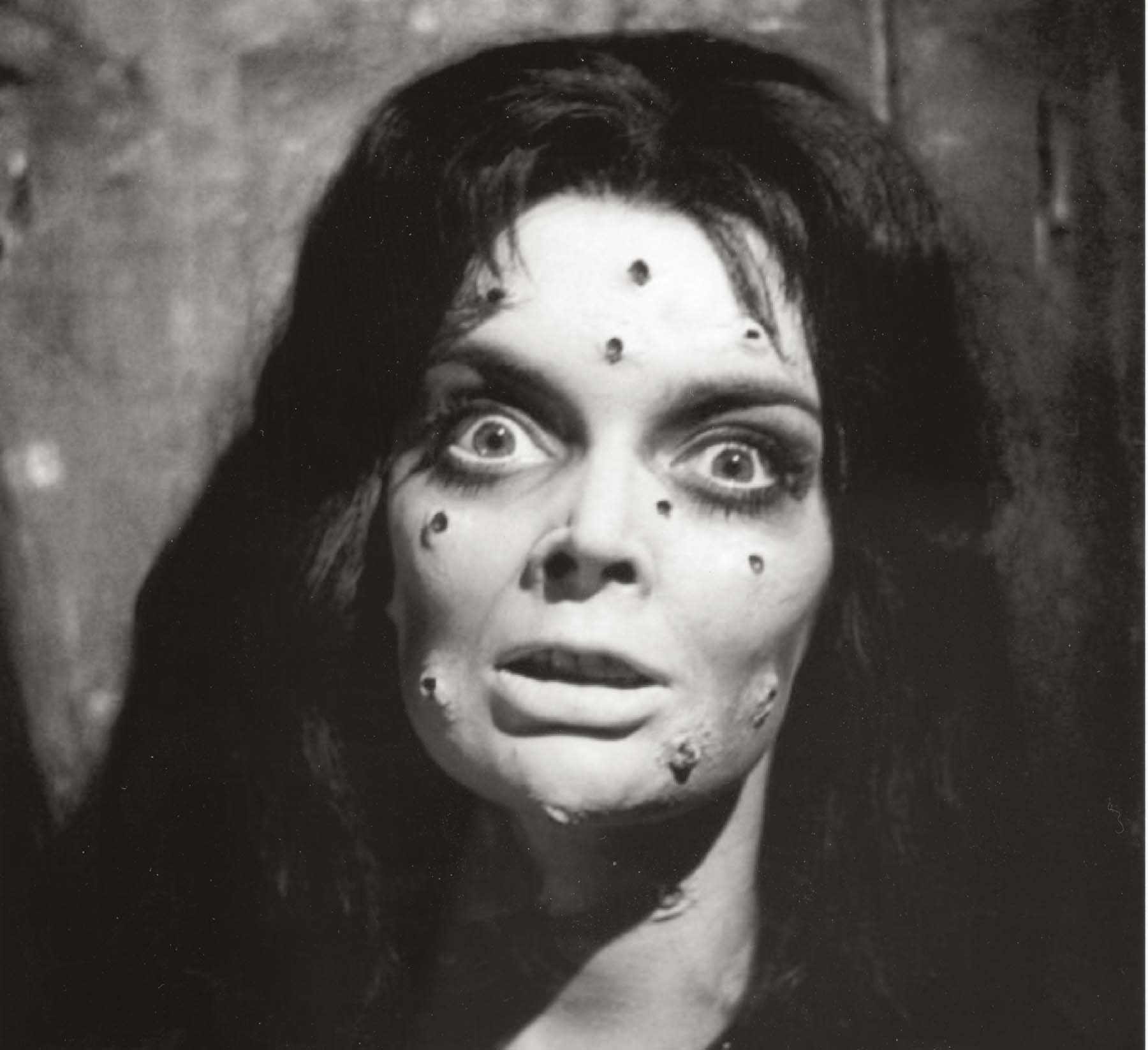
Asa returns from the dead, her face still bearing the scars of her demonic punishment.
If you enjoyed Black Sunday (1960), you might also like:
SUSPIRIA
INTERNATIONAL CLASSICS/20TH CENTURY FOX, 1977
